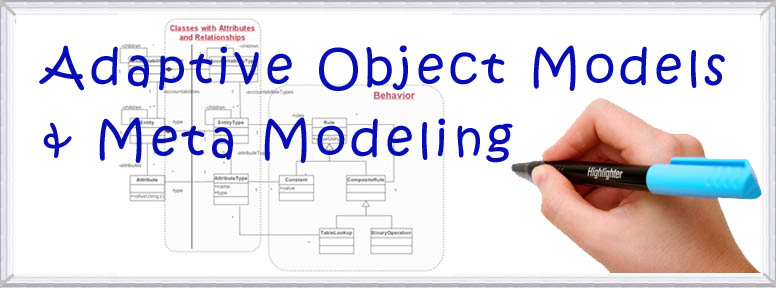![]() Joseph Yoder owns and operates the Adaptive Object Model.com website. He’s has been a meta practitioner for many years.
Joseph Yoder owns and operates the Adaptive Object Model.com website. He’s has been a meta practitioner for many years.
These Metadata and Adaptive Object-Model pages are a collection of shared ideas and visions about how to build dynamic and adaptable systems. I have been looking at Metadata ideas for a few years, including the design of a few applications that use Metadata and Adaptive Object-Models to describe the business rules and/or views. Trying to make a system dynamic and easily configurable can be hard, but the payoff can be large. This is highly related to Business Rules research, specifically when you want to have automated ways to describe business rules and either generate the code or have the descriptive information for the business rules live in a database so that they can be easily manipulated. This is also related to Generative Programming Techniques, Metamodeling, Domain-Specific Modeling, and Model Driven Architecture.
More about Adaptive Object Models
Architectures that can dynamically adapt to changing requirement are sometimes called reflective or meta-architectures. We call a particular kind of reflective architecture an Adaptive Object-Model (AOM). An Adaptive Object-Model is a system that represents classes, attributes, relationships, and behavior as metadata. It is a model based on instances rather than classes. Users change the metadata (object model) to reflect changes to the domain model. AOM stores its Object-Model in XML files or in a database and interprets it. Consequently, the object model is adaptive; when the descriptive information for the object model is changed, the system immediately reflects those changes.


